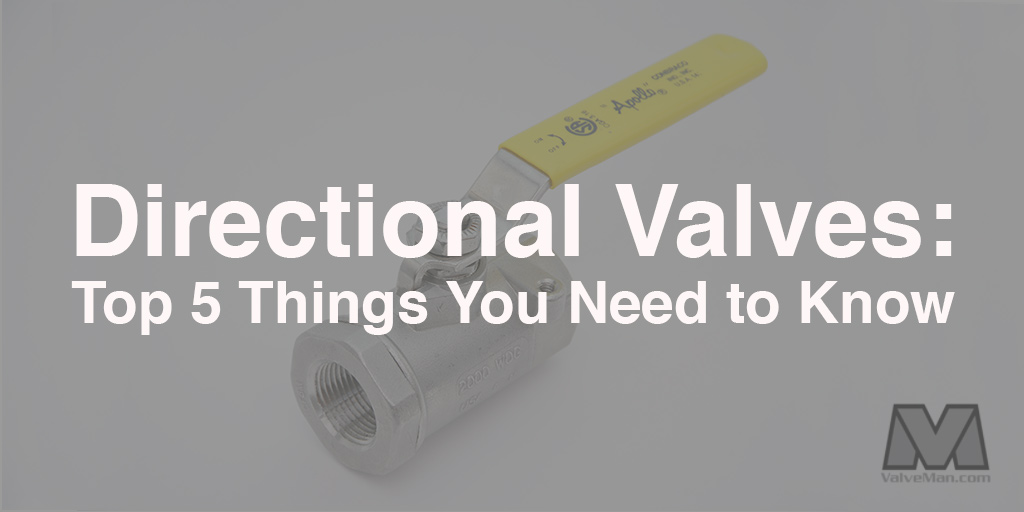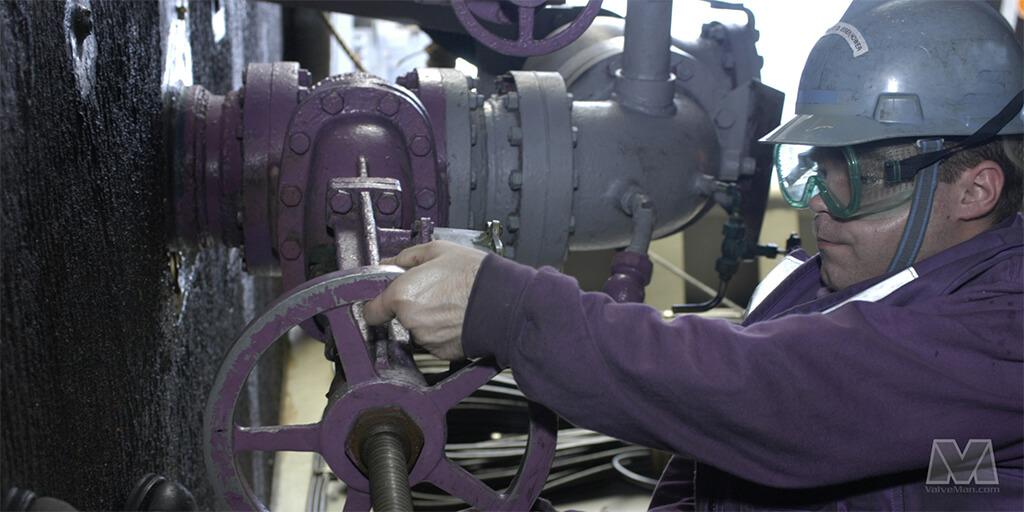Directional Valves: Top 5 Things You Need to Know
Posted by Jason Welsford on May 27th 2016

When selecting directional valves, there are five things that should be kept in mind. It would be simpler if one valve could suffice for more than one material, but all fluids, gasses, oils, etc., as well as their respective applications, have different characteristics that require different valve construction and configurations. It's no longer like the old days, when a valve manufacturer or supplier would simply offer customers whatever valve seemed best for the job, or at least one that might work. The five things you need to know when selecting directional valves reflect the needs and requirements of modern piping systems and manufacturing techniques, and have evolved because of them. Today, directional valves are high-tech, and are designed for specific, high-tech applications. Innovations in process technology practically happen over night, and the demand for specialized directional valves is continuously met with increasingly advanced valve technology. Selecting the correct valve for a precise application match--while definitely hinging on explicit specifications like temperature, pressure, and stress factors, as well as some general rules of thumb, like function, size, process medium, automation, and speed of operation--boils down to "What does the valve do?" and, "Is it truly the right valve for the job in mind?"
- 2 Way, 2 Position Valves - These types of valves serve as a fluid diverter, as in a directional valve. "2 way" means fluid or other material may enter the valve from one way, and exit it another (inlet/outlet ports). "2 position" refers to a choice of "open" or "closed." Respectively, the open position allows fluid to travel through the valve, while the closed position does not. Automated 2 position, 2 way valves are designed to be NO (normally open) or NC (normally closed). A NO valve allows fluid to travel through the valve while the actuator is de-energized, and only closes--stopping fluid movement--when the actuator is energized. An NC valve is different: fluid travel is halted while the actuator is de-energized, and allowed to travel when the actuator is activated. The difference is important because different piping systems do different duties. There are more complicated 2 position valves, but the 2 way, 2 position valve is the most common, and simplest of directional valves.
- Actuation - An "actuator" is normally an external force that commands internal movement within the directional valve. Manual actuation would mean by hand, while the word actuation typically means something a little more sophisticated, as in electricity. The most important thing to remember, though, is speed. So long as the actuator can change fluid direction at a speed your piping system requires, the medium used to do so is virtually irrelevant. With this in mind, it is helpful to compare two different actuators. The first is a "solenoid." This is an external, electrical actuator that controls the open/close position (called "direct acting"). Another type of actuation describes a different valve configuration, one which utilizes an internal pilot which determines fluid flow--this "piloted" action is directed by fluid pressure itself.
- Configuration - There are many 2 way, 2 position valves. All perform similar operations, but none of them are exactly the same. Configuration is often determined by process mediums--what's traveling through the valve--valve actuation, and what the valve needs to do. For example, 2 way, 2 position valve that is designed to work in a NO position will not work for an application that requires one to operate NC. Likewise, a 3 way, 2 position valve will have different characteristics and directional control abilities that a 2 way, 2 position valve doesn't.
- Size Selection - Sizing a valve goes far beyond knowing whether or not it "fits." This is the point where another important aspect of valve configuration comes into play. Different ports--as in "full" or "reduced"--will affect qualities such as the speed of a fluid or other medium's travel, as well as its pressure. Therefore port size, bore, and diameter is crucial to the integrity of a piping system. This is especially true for pneumatics and hydraulics. Port placement is also important, as they can be inline, at right angles, or parallel in their configuration.
- Installation and Mounting - A typical 2 way, 2 position valve has threaded connections and was designed to be mounted in-line, between two open pipe ends. Among the many connections available, the "flanged" valve, which is held together by bolts, is extremely advantageous in applications that might require the valve's periodic removal for inspection, repairs, or replacement. Some installations will require a valve manifold, which offers space and time saving advantages, as multiple valves can be mounted to one directional flow control passage. Many valves--even actuated valves--can be mounted in any position, vertically or horizontally. While this is normal for most valves today, piloted valves may be the exception.

Directional Valve Considerations
As you can see, there's a lot to think about, and this article truly only scratches the surface. But if you keep these five things in mind when designing a piping system of any kind--whether it utilizes electricity, pneumatic, or hydraulic power--and regardless of what type of material traveling through your system, you will find it much easier when selecting your directional valves.
Different configurations and constructions offer varied advantages, just as actuation characteristics, internal sizing (specifically port and bore sizes and shapes), and mounting capabilities do. These describe the basic mechanics of directional valve selections. Cost, efficiency, and energy consumption are other things to think about, as well as "where" the valve is going to be installed, such as in a hazardous location, where an explosion proof actuator would be ideal.
Where to Buy Directional Valves
When it comes to industrial grade valves, especially anything more complicated than an average shut-off valve, it's best to seek the help of those in the know. We're the ValveMan.com valve store, and we've been in the valve business for over 50 years. We carry many industrial grade directional valves, and can tell you just about anything you'd ever wanted to know about them, and more. We're happy to help you in your directional valve selection. We are knowledgeable about valves, because all we sell are valves. It's simply what we do, and we do it better than anyone else.
